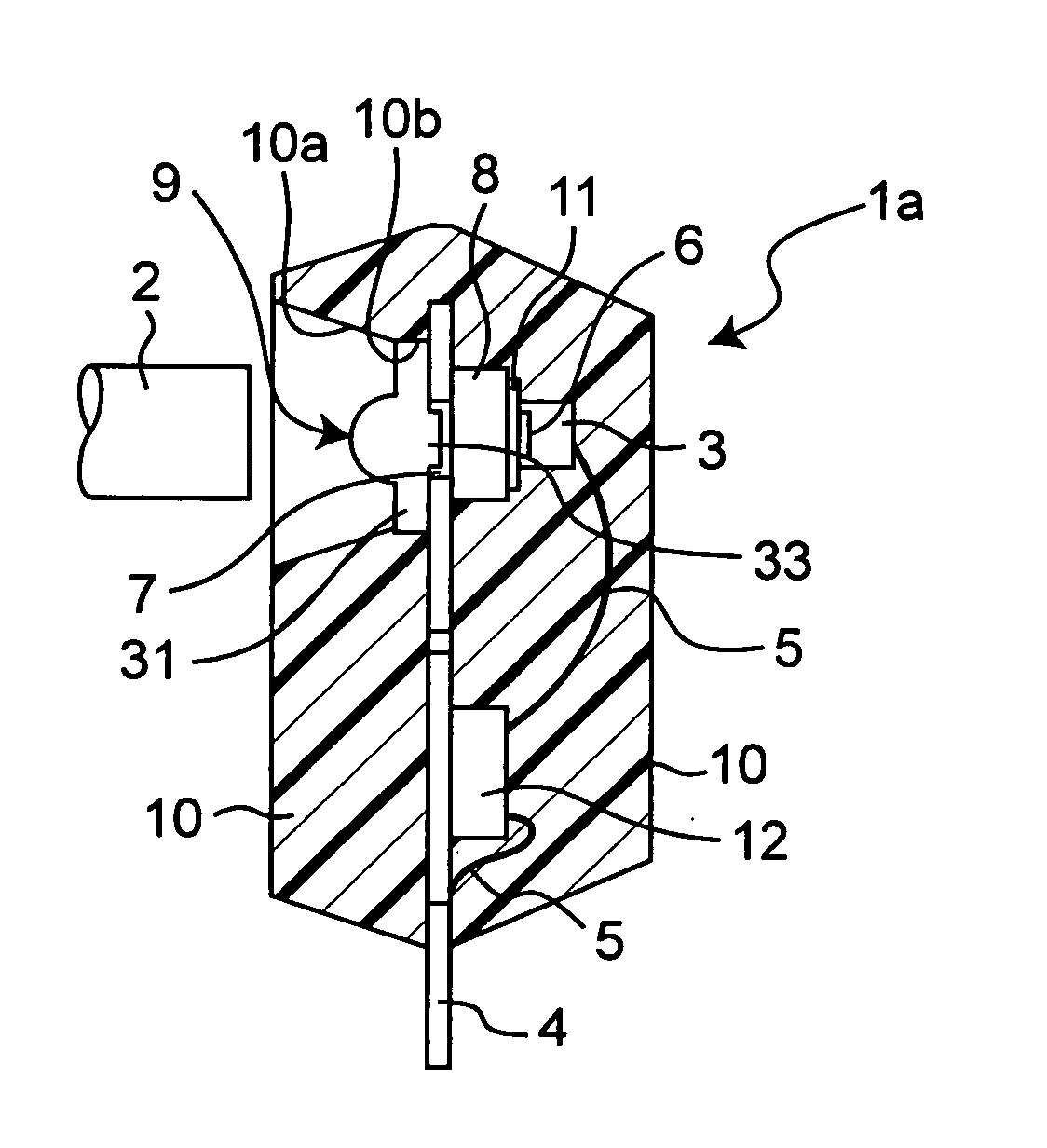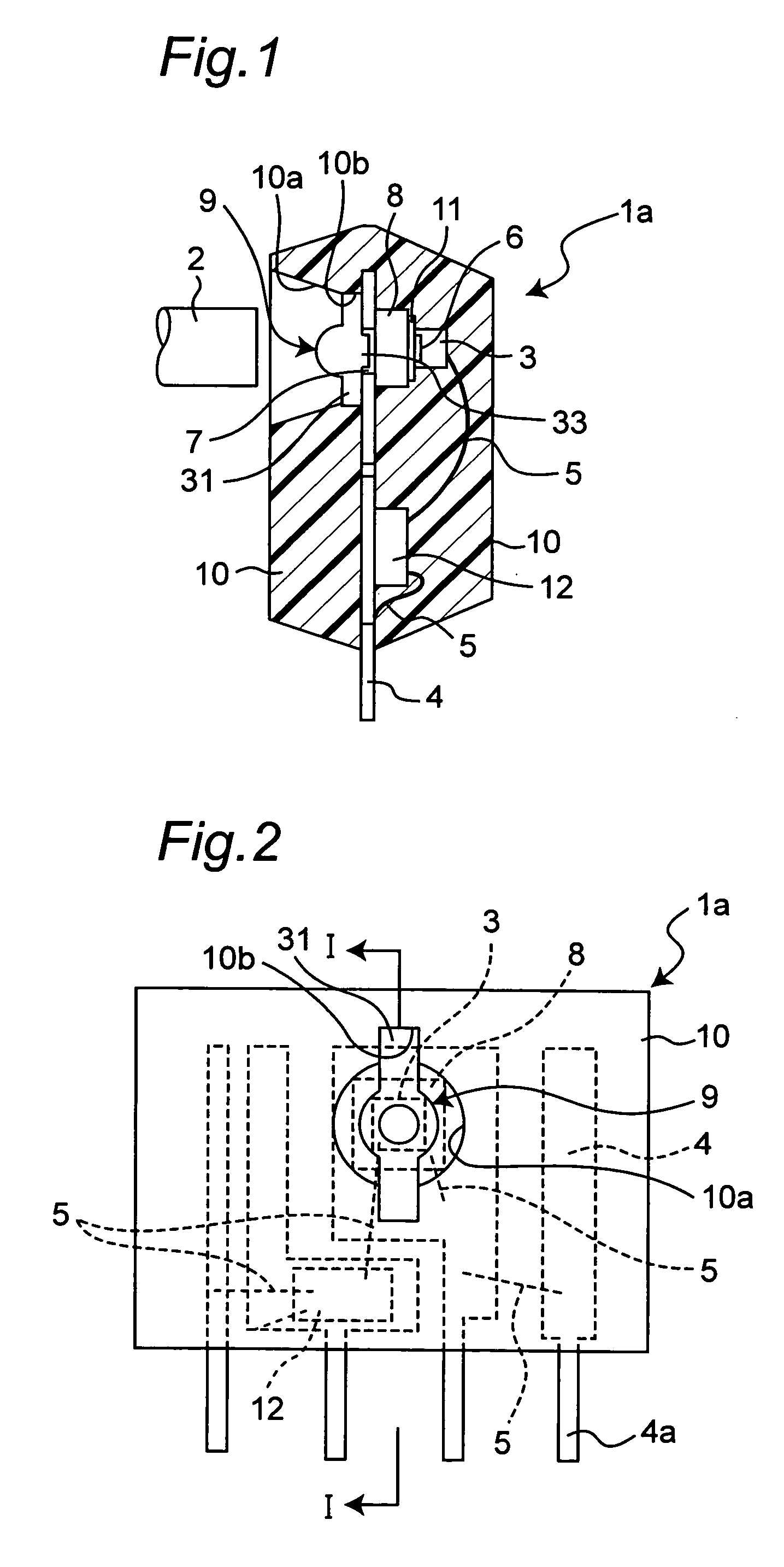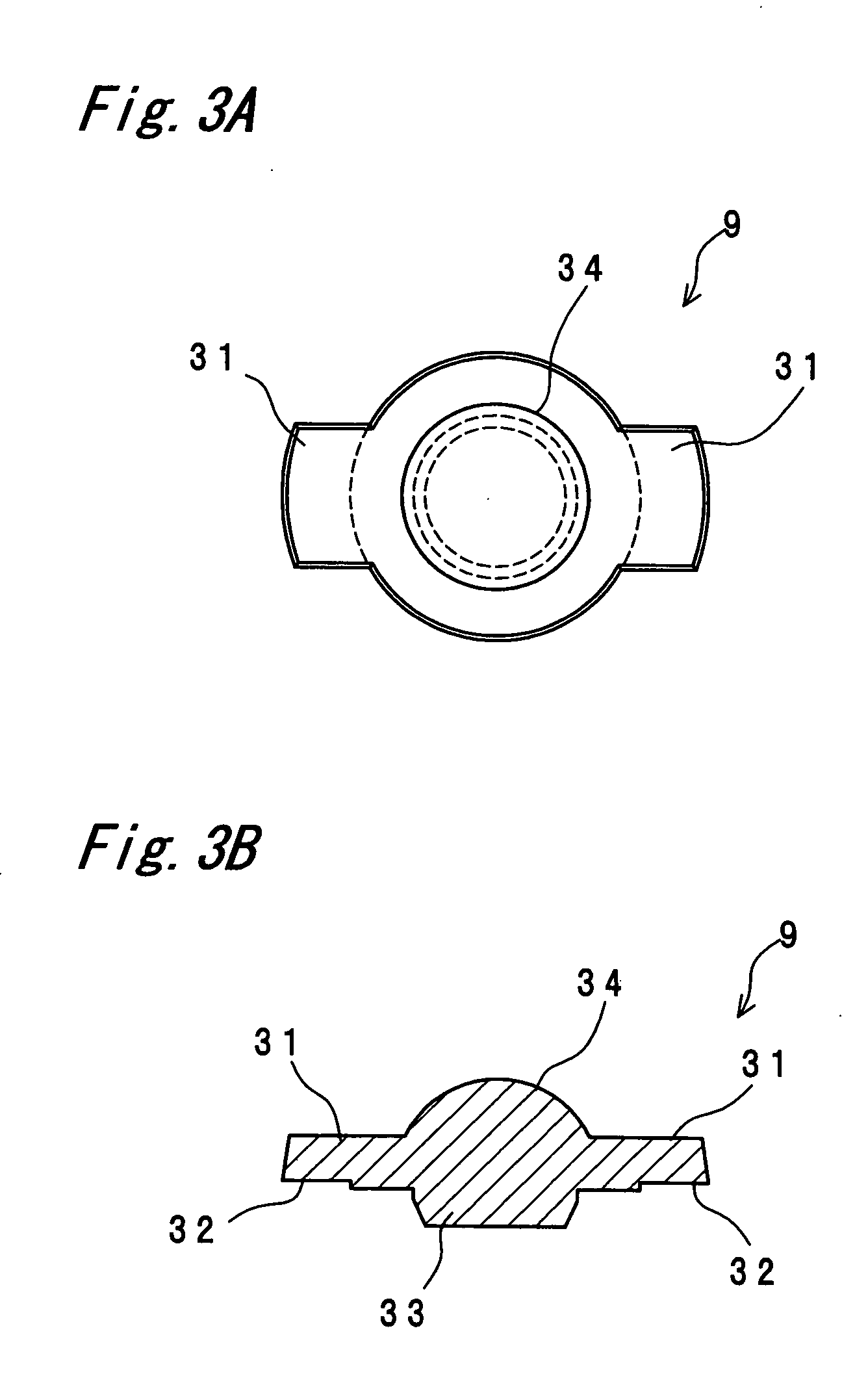Optical semiconductor device and electronic equipment using same
- Summary
- Abstract
- Description
- Claims
- Application Information
AI Technical Summary
Benefits of technology
Problems solved by technology
Method used
Image
Examples
first embodiment
[0105]FIG. 1 is a schematic sectional view showing an outlined structure of an optical semiconductor device according to a first embodiment of the present invention, and FIG. 2 is a front view showing the optical semiconductor device viewed from the side of an optical fiber 2. FIG. 1 shows a section taken along a line I-I of FIG. 2.
[0106] As shown in FIGS. 1 and 2, the optical semiconductor device 1a is composed of a lead frame 4 having an aperture 7, a glass submount 8 exemplifying a submount having transparency disposed on one surface of the lead frame 4 so as to close the aperture 7 of the lead frame 4, a semiconductor optical element 3 which has an optical portion 6 and which is mounted on a surface of the submount 8 opposite to the surface on the side of the aperture 7 of the lead frame 4 with the optical portion 6 facing the aperture 7 through the submount 8, a signal processing circuit (semiconductor element) 12 exemplifying signal processing integrated circuit disposed on t...
second embodiment
[0133]FIG. 6 is a schematic sectional view showing an outlined structure of an optical semiconductor device according to a second embodiment of the present invention, and FIG. 7 is a front view showing the optical semiconductor device viewed from the side of an optical fiber 2. FIG. 6 shows a section taken along the line VI-VI of FIG. 7.
[0134] The optical semiconductor device 1b in the second embodiment is different from the optical semiconductor device 1a in the first embodiment of FIGS. 1 and 2 in the point that an IC (Integrated Circuit) 13 is mounted on a glass submount 8, wherein the IC 13 is a single chip incorporating a light-receiving device in the case where the semiconductor optical element is the light-receiving device and an amplifying integrated circuit that is the signal processing circuit 12 in FIGS. 1 and 2 showing the first embodiment.
[0135] The IC 13 formed as a single chip is mounted at the same position as that of the semiconductor optical element 3 in the firs...
third embodiment
[0138]FIG. 8 is a schematic sectional view showing an outlined structure of an optical semiconductor device according to a third embodiment of the present invention, and FIG. 9 is a front view of the optical semiconductor device viewed from the side of optical fibers 2. FIG. 8 shows a section taken along the line VIII-VIII of FIG. 9.
[0139] The optical semiconductor device 1c in the third embodiment is different from the optical semiconductor device 1a of the first embodiment of FIGS. 1 and 2 in the point that a light-emitting device 3b, a light-receiving device 3a, and an IC 14 composed of a driving integrated circuit for the light-emitting device 3b and an amplifying integrated circuit for the light-receiving device 3a are incorporated in a single package. Other aspects are the same as the first embodiment.
[0140] In the optical semiconductor device 1c of the third embodiment, the light-emitting device 3b, the light-receiving device 3a and the IC 14 are incorporated in a single pa...
PUM
 Login to View More
Login to View More Abstract
Description
Claims
Application Information
 Login to View More
Login to View More - R&D
- Intellectual Property
- Life Sciences
- Materials
- Tech Scout
- Unparalleled Data Quality
- Higher Quality Content
- 60% Fewer Hallucinations
Browse by: Latest US Patents, China's latest patents, Technical Efficacy Thesaurus, Application Domain, Technology Topic, Popular Technical Reports.
© 2025 PatSnap. All rights reserved.Legal|Privacy policy|Modern Slavery Act Transparency Statement|Sitemap|About US| Contact US: help@patsnap.com



